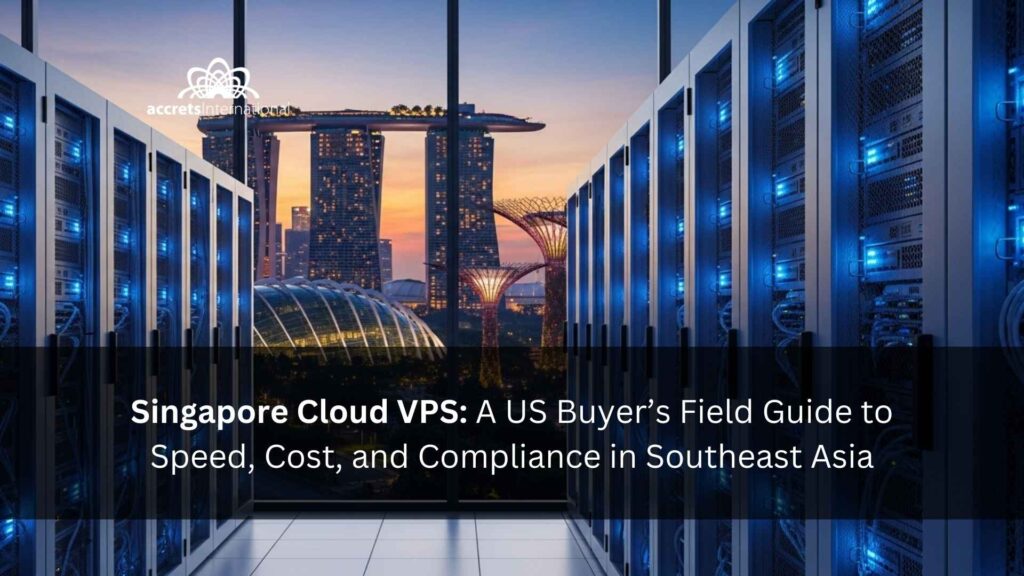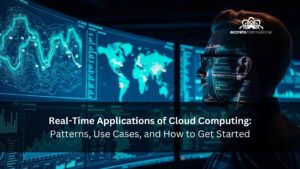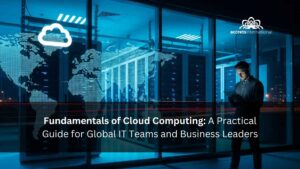If you are researching singapore cloud vps from the United States, here is the short answer. Singapore is often the best Southeast Asia hub for US teams that need reliable performance across APAC, transparent regulation, and mature provider choices. In this guide we validate when Singapore makes sense, how to test it from the US, what to compare on pricing and features, and how to design architectures that actually meet your SLAs. Let us walk through the details together and read to the end for a practical next step.
Table of Contents
ToggleWhy US Teams Keep Shortlisting Singapore for Cloud VPS
Singapore combines a dense, carrier rich network core with political stability, strong data protection, and a deep vendor ecosystem. The result is predictable performance across Southeast Asia, clear operational norms, and a large talent pool. If you are weighing the broader operating model, our overview of infrastructure IT outsourcing in Singapore explains how local expertise can reduce lift for US teams and accelerate time to value.
When Singapore Makes Sense vs Nearby Regions
Use Singapore when:
- Your primary users are in APAC. If most active users sit in Southeast or East Asia, Singapore’s central location and peering make it a low risk first region.
- You have a split audience across US and APAC. Consider a dual region approach, for example US West for your home market and Singapore for Asia. Keep data close to users and design for read locality with asynchronous replication.
- You value regulatory clarity. Singapore’s PDPA and mature regulatory environment provide clearer rules and audit expectations.
Consider nearby regions when:
- Ultra local latency dominates. For Indonesia first adoption, Jakarta may shave a few milliseconds. For North Asia, Tokyo or Hong Kong might edge out RTTs.
- Data residency is country specific. Contracts or sector rules can require in country hosting.
Decision prompt: If more than half of your active sessions or revenue weighted traffic is in Asia Pacific, test Singapore first. If traffic splits, test both US West and Singapore with read heavy replicas and put write paths closest to the majority of writes. For a deeper regional comparison, see when U.S. companies should choose Singapore over Tier 2 Southeast Asia data centers for tradeoffs that go beyond latency, including operational maturity and power redundancy.
What to Evaluate in a Singapore Cloud VPS
Specs and policies to assess:
- CPU generation and contention. What microarchitecture and frequency. Is CPU overcommitment disclosed. Track steal time during peak hours.
- Memory behavior. Verify memory bandwidth on bursty workloads and watch page cache under I O pressure.
- Storage. NVMe versus SATA SSD, advertised IOPS versus sustained IOPS, throttling policy, snapshot and backup performance and costs.
- Network. Included bandwidth, egress pricing, peak versus sustained throughput, anti DDoS options, and shaping disclosures.
- IP addressing. IPv4 scarcity often means add on costs. Ensure IPv6 readiness for forward compatibility.
- SLA and support. Response times, incident transparency, maintenance windows, and credits.
- Compliance posture. Logging, KMS options, encryption defaults, and audit artifacts.
If you are still orienting around service layers, you may find it helpful to review the advantages of Infrastructure as a Service and how it differs from PaaS in IaaS vs PaaS.
Test Before You Buy: A Replicable Benchmark Playbook
The best way to choose is to measure with your traffic pattern. Use this compact plan.
- Pick vantage points. One host in US West and one in US East, either cloud VMs or your own probes.
- Latency and path quality.
- Run ping <SG-test-ip> to get baseline RTT.
- Run mtr -rwzc 100 <SG-test-ip> to measure packet loss, jitter, and path stability.
- Run ping <SG-test-ip> to get baseline RTT.
- Throughput from client to Singapore.
- Run iperf3 -c <SG-test-ip> -P 4 -t 30 with parallel streams and capture average and min or max.
- Run iperf3 -c <SG-test-ip> -P 4 -t 30 with parallel streams and capture average and min or max.
- File transfer tests. Download a 100 to 1,000 MB test object from the provider’s Singapore endpoint during peak, off peak, and weekend windows. Log mean and p95.
- Interpretation.
- Web apps tolerate modest jitter. APIs and realtime streams are more sensitive.
- Packet loss above 0.5 percent at peak needs scrutiny. Frequent route changes can hint at congestion or suboptimal peering.
- Web apps tolerate modest jitter. APIs and realtime streams are more sensitive.
- Recordkeeping. Save raw logs, chart p50 or p95, and note time of day patterns.
This testing window is a good time to baseline controls. If you are formalizing security posture, our cloud security consulting guide outlines how to set minimum guardrails such as encryption, logging, and account hygiene while you experiment with vendors.
Price and Feature Snapshot: Apples to Apples SG VPS Plans
Publish a small table for 1 to 2 vCPU with 2 to 4 GB RAM using a clear methodology. Date stamp the snapshot and link each row to the vendor’s Singapore page for verification.
Fields to include:
- vCPU generation, RAM, storage type, and IOPS or throughput caps
- Included bandwidth and egress pricing ladders
- IPv4 add on costs and IPv6 support status
- Snapshots or backups included or add on, plus performance impact
- DDoS protection, SLA terms, support channels and SLOs
- Any trial credit or free tier for proof of concept
Compliance and Sector Notes: PDPA, Cross Border Transfers, and Regulated Workloads
Singapore’s Personal Data Protection Act is principles based and business friendly, but it still demands discipline.
For US companies handling PII:
- Data location. Document where personal data and logs sit. Declare cross border flows in privacy notices.
- Encryption. Enforce TLS 1.2 plus in transit and provider KMS backed encryption at rest. Rotate keys and segregate duties.
- Retention and access. Align retention windows with business and legal needs. Automate access reviews for privileged roles.
- Subprocessors. Keep an updated list. Require incident notification and standardized audit artifacts.
Sector examples:
- Financial services. Expect tighter controls on access logging, audit trails, and disaster recovery testing. See cloud banking solutions in Singapore and Southeast Asia for the artifacts auditors will ask for and how to prepare them without stalling delivery.
- Public sector contexts. Government Cloud in Singapore can require stricter boundaries on tenancy, network, and change control. Plan for more rigorous evidence collection.
Reference Architectures: SG Only, Dual Region, Hybrid, and Multi Cloud
SG only for APAC first
Pattern: Single production region in Singapore with CDN for global static assets and read replicas for analytics.
Pros: Low complexity and strong APAC latency.
Cons: US users see higher RTT and DR requires careful regional planning.
Dual region for US plus APAC
Pattern: Writes land closest to the write majority. Use asynchronous replication between regions and regional read replicas.
Pros: Good user experience on both sides of the Pacific and higher resilience.
Cons: Consistency tradeoffs and cost, plus careful design for failover and data sovereignty.
Hybrid with on prem
Pattern: Sensitive datasets or latency critical systems remain on premises while customer facing workloads run in Singapore.
Pros: Data gravity is respected and modernization is smoother.
Cons: Integration and operational overhead.
US teams exploring hybrid cloud in Singapore can use this field guide to match patterns to ops models and compliance boundaries.
Multi cloud with Singapore primary
Pattern: Use containers, Terraform, and GitOps for repeatable deployments across two providers to reduce vendor risk.
Pros: Portability and negotiation leverage.
Cons: Lowest common denominator design and duplicated effort.
For multi cloud portability, review inter cloud interoperability so you plan identity, networking, and observability consistently.
Connectivity for China traffic: If your users traverse the Great Firewall, consider enterprise connectivity options including Teridion cross border acceleration to stabilize performance for China bound routes.
Migration Checklist for US to Singapore
Follow an ordered plan to avoid regressions and downtime.
- Inventory and dependency map. Catalog services, external calls, and data flows.
- Environment parity. Recreate IAM, KMS, VPC, DNS, and baseline guardrails in Singapore.
- Staging and load tests. Spin up a staging environment in Singapore, replay production like traffic, confirm autoscaling thresholds.
- Data migration. Snapshot, encrypt, transfer, validate checksums, and rehearse rollback.
- Cutover playbook. Freeze changes, shorten DNS TTLs, flip traffic region by region, and monitor error budgets.
- Post cutover validation. Synthetics, user journeys, and logging dashboards. Track p50 or p95 latency and error rate deltas.
Pair the move with managed backup services and DR as a Service to meet RPO and RTO targets without building everything yourself. If your steady state needs call for sovereignty or special hardware, compare on prem private cloud with Singapore VPS for predictable workloads.
Risks and Mitigations
- IPv4 scarcity. Many providers charge monthly for IPv4. Reserve only what you need and prefer IPv6 internally and at edges where possible.
- Noisy neighbors and oversubscription. Monitor CPU steal, I O latency, and network jitter at peak. Escalate or migrate instance class if thresholds are breached. Choose providers that disclose contention policies.
- Egress fees. Budget for data leaving the region. Place caches and CDN close to users, compress payloads, and avoid chatty cross region calls.
- Vendor lock in. Maintain infrastructure as code, image portability, and environment parity to keep your exit options open.
If you are reevaluating platforms after recent licensing shifts, see VMware alternatives for tradeoffs that can affect your stack and cost model.
Mini Use Case Scenarios
US SaaS expanding to Southeast Asia
Adopt a dual region approach. Use US West for your core, Singapore for Asia traffic, regional read replicas, async writes for non critical data, and a CDN for static assets. Build feature flags to pilot in Singapore first.
Gaming and realtime
Jitter and packet loss matter as much as RTT. Place session brokers near players, regionalize matchmaking, and use provider looking glass endpoints to verify peak hour stability. Keep state syncs lightweight and compress aggressively.
Fintech or PII workloads
Design for PDPA expectations. Use identity separation for admins, KMS backed encryption everywhere, append only audit logs, and clear retention. Align DR tests with audit cycles and keep your subprocessors list current.
For business leaders coordinating people and process during expansion, consult the US decision maker’s field guide to IT support in Singapore to frame staffing, escalation, and vendor management across time zones.
What To Do Next
- Run the benchmark playbook from US West and US East. Collect latency, jitter, and throughput to at least two Singapore candidates across peak, off peak, and weekend windows.
- Shortlist three providers using the evaluation checklist. Focus on bandwidth policies, IPv4 pricing, and storage performance under load.
- Choose an architecture pattern. Select SG only for APAC first, dual region for US plus APAC, or hybrid. Set preliminary RPO and RTO targets and map them to backup, DR, and replication design.
- Document compliance posture. Decide on logging, KMS hierarchy, and data movement guardrails before scaling.
If you are still defining roles and responsibilities, review managed vs cloud services to clarify boundaries and governance so you can keep velocity without compromising guardrails.
Conclusion
Singapore earns its spot as Southeast Asia’s cloud hub for good reasons. The country offers dense connectivity, predictable performance, and a regulatory environment that rewards disciplined builders. For US teams, the winning pattern is to measure your reality, choose a topology that matches your users, and design compliance and resiliency into the plan from day one.
When you are ready to move from analysis to implementation, our Managed Cloud Service Provider team can co design your Singapore landing zone, from cloud infrastructure as a service to a neutral cloud service brokerage that simplifies multi vendor procurement. You can also review why Accrets to help stakeholders understand the engagement model.
For a human walkthrough tailored to your use case, contact Accrets expert for singapore cloud vps via our consultation form.
Dandy Pradana is an Digital Marketer and tech enthusiast focused on driving digital growth through smart infrastructure and automation. Aligned with Accrets’ mission, he bridges marketing strategy and cloud technology to help businesses scale securely and efficiently.




